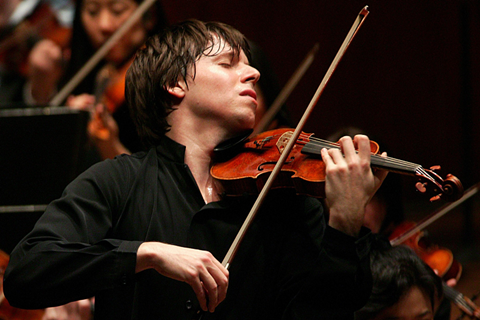There is no ‘one size fits all’, argues the American violinist. It is important to discuss why students chose their fingerings and why there may be better alternatives

Bowings and particularly fingerings – which strings you use, where you place your glissandos and so on – are very individual, because they are tied into the philosophy of your interpretation and expression of a piece. They are so personal: what one player does may seem illogical to someone else; some choices will fit one person’s hand when for others they might not work at all.
When teachers are very strict about the fingerings and bowings their students use, it locks those students into a way of thinking. This stifles them creatively and I’m very much against that idea. So often I hear teachers blanketly saying, ‘This is the fingering. Why didn’t you do what I told you to?’ instead of explaining why they use that fingering and how it ties into the interpretation of the piece.
When I was a youngster the bulk of my studies were with Josef Gingold. He would sometimes give me very unorthodox fingerings passed down to him by his teacher, Eugène Ysaÿe. These were not always intuitive, but they were very expressive and made sense for musical reasons. He would also offer his own ideas, but when he did, he just meant for his students to give them a try. Sometimes I would use my own fingerings and he would say, ‘Oh my God, you’ve just sold me on that!’
I think it’s really important, if teachers encounter students who play with fingerings they don’t agree with, to discuss with those students why they chose the fingerings and why there may be better alternatives. That isn’t to say that every fingering a student comes up with is the best one: there are arguments against doing certain things in a particular way, for using an open string or not, and so on – but it’s important for us to be aware of those arguments, and to think about them properly.
It is important to discuss why students chose their fingerings and why there may be better alternatives
Another danger comes through the many music editions that have been published to include fingerings and bowings by famous violinists, or sometimes by violinists I’ve never even heard of. I remember asking as a kid, ‘Do you have so-and-so’s fingerings? I need to copy them,’ even if I didn’t understand why. A lot of young players, when learning these pieces for the first time, will follow what they see on the page without really thinking about it.
I am still fighting against the consequences of this now, as an adult. There are some fingerings that I still do purely because years ago I saw them written on the page by a violinist I’d never even met, just because they fit their hand. On real evaluation, I have realised that these fingerings often don’t work with the way I think about the music – but I’m stuck with a physical memory of fingerings that are of no benefit to my interpretation, until eventually I manage to do my own thing.
Now I don’t always stick to the same fingerings even for two performances in a row. Often I practise different ideas for similar passages, so that I’m comfortable doing various fingerings depending on how I feel in the moment.
I may also change what I do depending on the concert hall: in some acoustics, for example, there may be passages where I feel I need to go on to the E string instead of the A string, to project more or to make a phrase sound more fluid.
Sometimes I do a different fingering just because I feel inspired in the moment. I’ve had orchestra players come to me after a concert to say, ‘You played that with different fingerings in the rehearsal. How come?’ I like that feeling: it gives me the sense that I’m not hooked into a particular way of doing things. It makes me feel more free.
This article is from The Strad’s July 2018 issue, available to view in magazine format for desktop computer or via the The Strad App, or buy the print edition
INTERVIEW BY PAULINE HARDING


































No comments yet